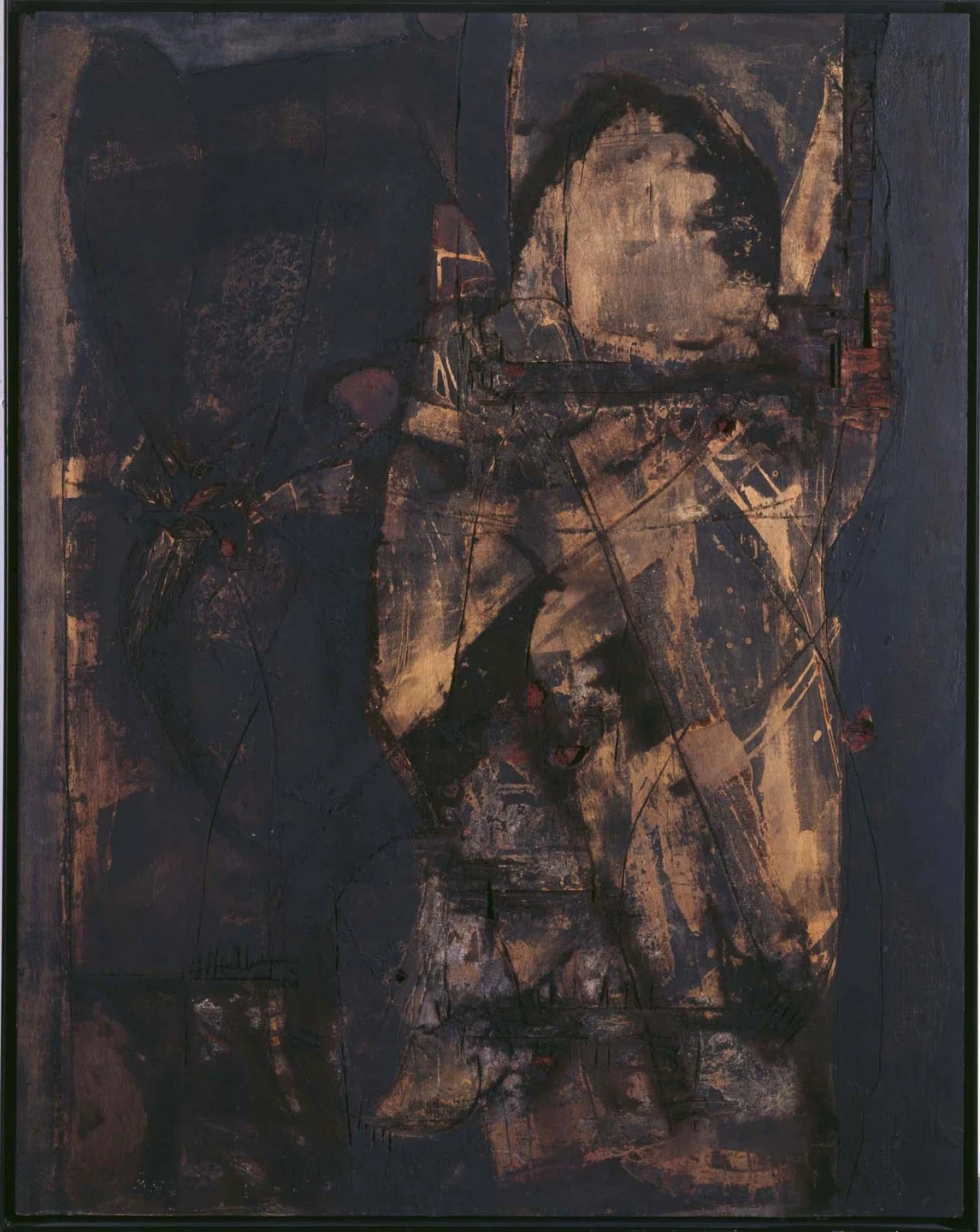Lucio Muñoz

<p></p>
The artist starts out working with landscape, a prevalent genre at the time in Spain, particularly among those considered disciples of Benjamín Palencia. In 1955 Muñoz' first paintings - semi-abstract - are exhibited, with visible influences from Paul Klee, Rufino Tamayo, Ben Nicholson and Joaquín Torres García, among others.
In Paris he declares his firm commitment to Abstract Expressionism, and on his return to Spain two exhibitions, one in the Fernando Fe Gallery in 1957 and the other in El Ateneo the following year, define his established style and work to secure his place among the Spanish avant-garde as he is included in certain collections, for instance the Fernando Zóbel and Juan Huarte collections.
An informalist aesthetic takes a firm foothold in Lucio Muñoz's work via the amalgamation of traditional materials with other more non-habitual ones such as soil, paper and cardboard. His most decisive years are 1958 and 1959 when he starts to explore the expressive potential of wood, a material traditionally considered non-pictorial, working with plywood in particular, which he unsystematically carves, scratches, burns and chips. His far-reaching influences in this period include Francisco de Goya's black paintings, Diego de Velázquez, Gregorian chant, Castilla, flamenco and Alberto Durero's engravings.
From the end of the Sixties he gradually enters his more fantastical and night-time period, which lasts a decade or so until, in 1981, his exhibition in the Juana Mordó Gallery reflects the shift towards a plainer and lighter aesthetic. Between 1983 and 1984 Lucio Muñoz works on a series of large-scale colour engravings that enable him grasp techniques that he later applies to his painting. In 1983 he wins the National Plastic Arts Award, a time in which he realises landscape pieces that are more natural, romantic and effusive, where the wood spontaneously fuses to form another element.
The exhibition in the Centro de Arte Reina Sofía represents the first anthology dedicated to the artist, displaying a select collection of his previously unseen final works that allow his constant evolution to be appreciated.
The paintings displayed span the period from 1952 to 1988 and are co-ordinated according to two main bodies of work: those that correspond to the time between 1955-1965, when he defines and consolidates his style and those corresponding to the last four years, a time of innovation. The rest of Muñoz' artistic output, from 1966 to 1985, is represented with a number examples, though his engravings are not exhibited here. In total there are roughly ninety-five paintings from countries such as Austria, Norway, Holland, Argentina and Switzerland.
In contrast to Rufino Tamayo, whose exhibition takes place simultaneously in the Centro de Arte Reina Sofía, Lucio Muñoz' murals cannot be transported. Therefore, a photographic appendix by Javier Campano is included to show the altarpiece created by Muñoz for the Aránzazu Basilica, his greatest contribution to mural art.
Artists
Muñoz, Lucio
Fundaçao Calouste Gulbenkian, Lisbon (January 19 - February 19,1989)
Organised by
Centro Nacional de Exposiciones
Image gallery
